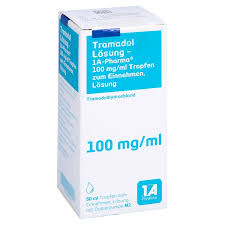The Use of Tramadol: Benefits and Risks

Introduction to Tramadol
Tramadol is a prescription medication used primarily to manage moderate to moderately severe pain. As an opioid analgesic, it works on the brain’s receptors, reducing the perception of pain. Given the rising concerns over opioid misuse and addiction, understanding tramadol’s implications and its role in pain management is critical for both healthcare providers and patients.
Current Trends and Usage
Recently, tramadol has garnered attention due to increased prescriptions and its classification as a controlled substance in various jurisdictions. According to the UK Medicines and Healthcare products Regulatory Agency (MHRA), tramadol remains a vital component of pain management for conditions such as post-operative pain, chronic pain, and fibromyalgia. A report from the National Institute for Health and Care Excellence (NICE) highlights tramadol’s effectiveness, particularly when patients do not respond to other pain medications.
Risks and Side Effects
While tramadol can be effective, it is not free from risks. Side effects can include dizziness, nausea, and constipation. More seriously, misuse can lead to dependence and addiction, leading to a new set of health challenges. The UK has seen a rise in reports of tramadol-related harm, prompting health authorities to implement stringent prescribing guidelines. In 2020, the National Health Service (NHS) issued warnings about the dangers of over-prescription and the importance of monitoring patients closely.
Regulatory Changes and Future Outlook
In light of these concerns, regulatory changes are underway. In 2021, the Advisory Council on the Misuse of Drugs recommended further control measures for tramadol to mitigate abuse risk. There are ongoing discussions about alternatives for pain management, including non-opioid medications and advanced therapies such as physical therapy or acupuncture.
Conclusion
As tramadol remains a commonly prescribed medication for pain relief, it is essential for patients and practitioners to understand its benefits and risks. While it offers substantial relief for many, the potential for misuse presents a significant challenge that requires careful management. Looking ahead, a comprehensive approach to pain management that balances efficacy with safety will be paramount in addressing the concerns surrounding tramadol and similar medications.









